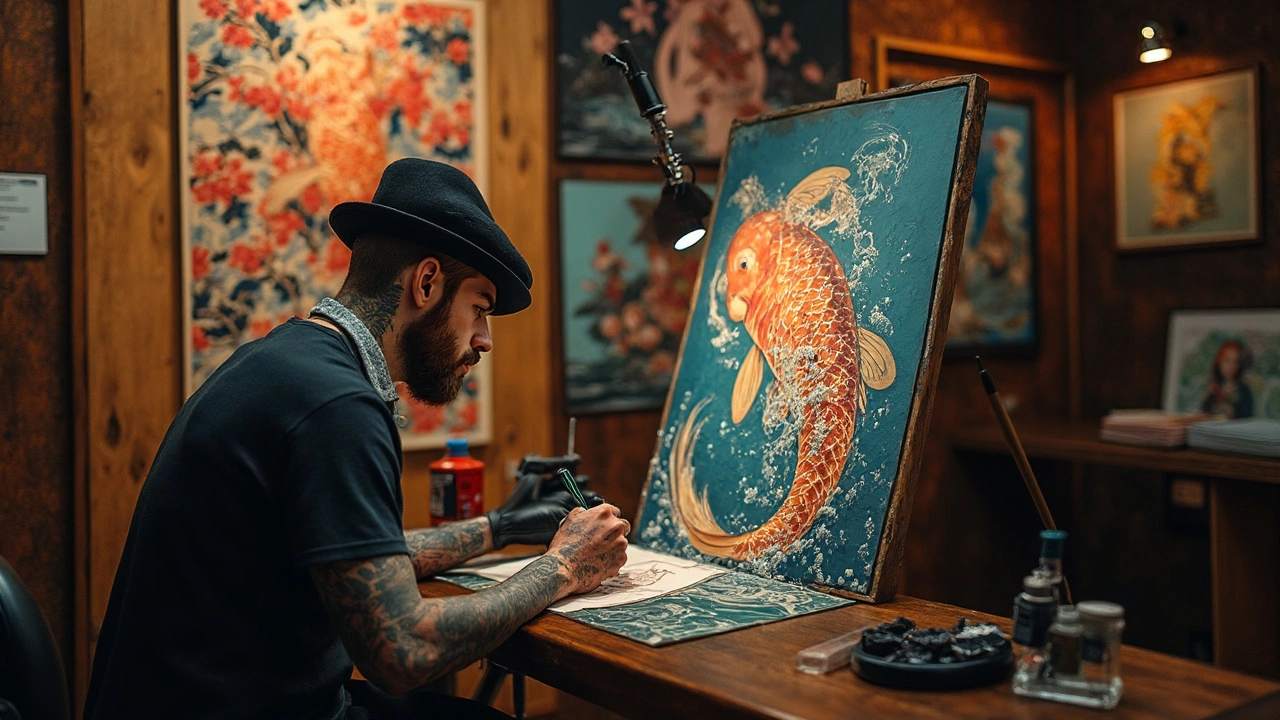Japanese Tattoos: History, Meaning & How to Choose a Design
Want a tattoo that reads like a story and moves with your body? Japanese tattoos offer bold visuals, clear symbolism, and a long tradition of craftsmanship. They can be stunning, but they also carry cultural weight and technical demands. Below I’ll give you practical advice on motifs, styles, choosing an artist, and aftercare so you can pick a design that looks great and ages well.
Common motifs and what they mean
Know the symbols before you commit. Koi fish often mean perseverance or success after struggle—perfect if you want a personal victory symbol. Dragons usually stand for strength, wisdom, and protection. Cherry blossoms (sakura) point to beauty and the shortness of life. Waves and windbars give motion and background flow. Peonies can signal wealth and bravery. Each motif has variations in tone depending on size, color, and placement, so think about the story you want the tattoo to tell.
Placement affects meaning and impact. A koi swimming upstream on a calf reads differently than a koi on the chest. Full-back pieces let you build a full scene; sleeves are great for layered stories. Smaller motifs work well on forearms, ankles, or behind the ear, but keep in mind detail fades more quickly at small scale.
How to pick the right artist and design
Traditional Japanese work (irezumi) demands experience. Look for artists who show consistent line work, smooth shading, and clean backgrounds in their portfolio. If you want hand-poked tebori, ask about the artist’s apprenticeship and examples of healed work—tebori ages differently than machine work. Don’t hire someone who posts a few designs and calls them “Japanese style”; find an artist who studies the designs and understands body flow.
Bring clear reference images and be open to the artist’s layout ideas. Trust their sense of flow—Japanese tattoos are built to interact with muscle and movement. Ask about sizing: fine details need room. Talk color choices: bold reds and deep blacks stand out, while subtle gray shading gives an aged, classical feel.
Respect cultural context. Avoid sacred or religious symbols you don’t understand. Learn a bit about the imagery and be ready to explain why the design matters to you. That respect shows your artist you’re serious and helps avoid awkward choices.
Aftercare matters as much as the session. Follow the artist’s cleaning routine, keep the piece out of direct sun while healing, and use fragrance-free moisturizer. Expect final color to settle after a few months—touch-ups are normal. For long-term care, always use SPF on healed tattoos and avoid harsh scrubs.
Ready to get started? Make a short list of meanings you want, collect reference photos, and book consults with two or three artists. A good conversation will reveal who understands the tradition and who just copies visuals. That’s how you get a strong, beautiful Japanese tattoo that suits you and stands the test of time.

